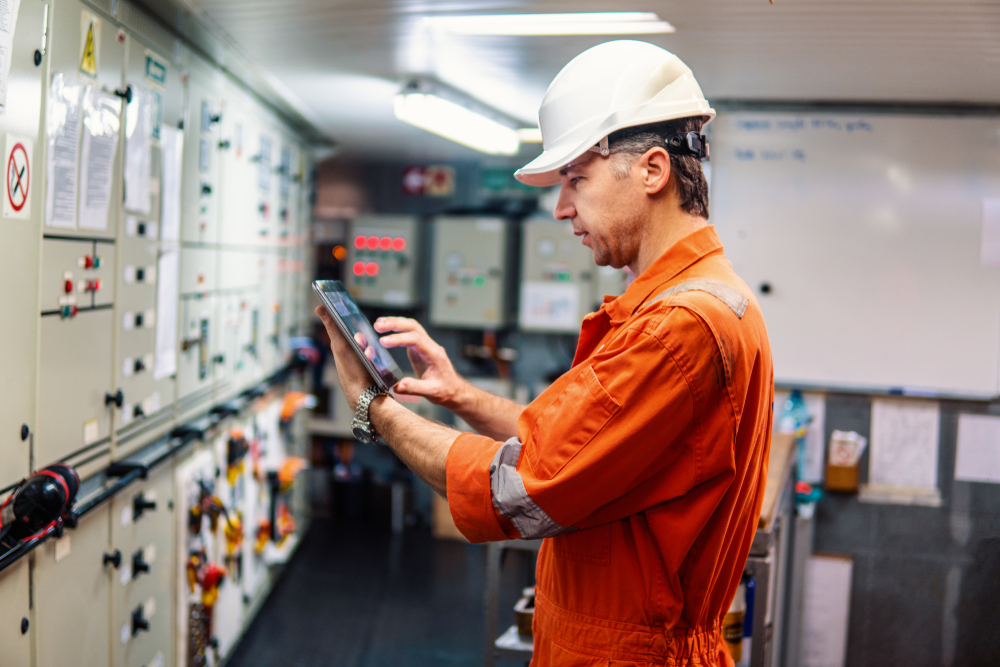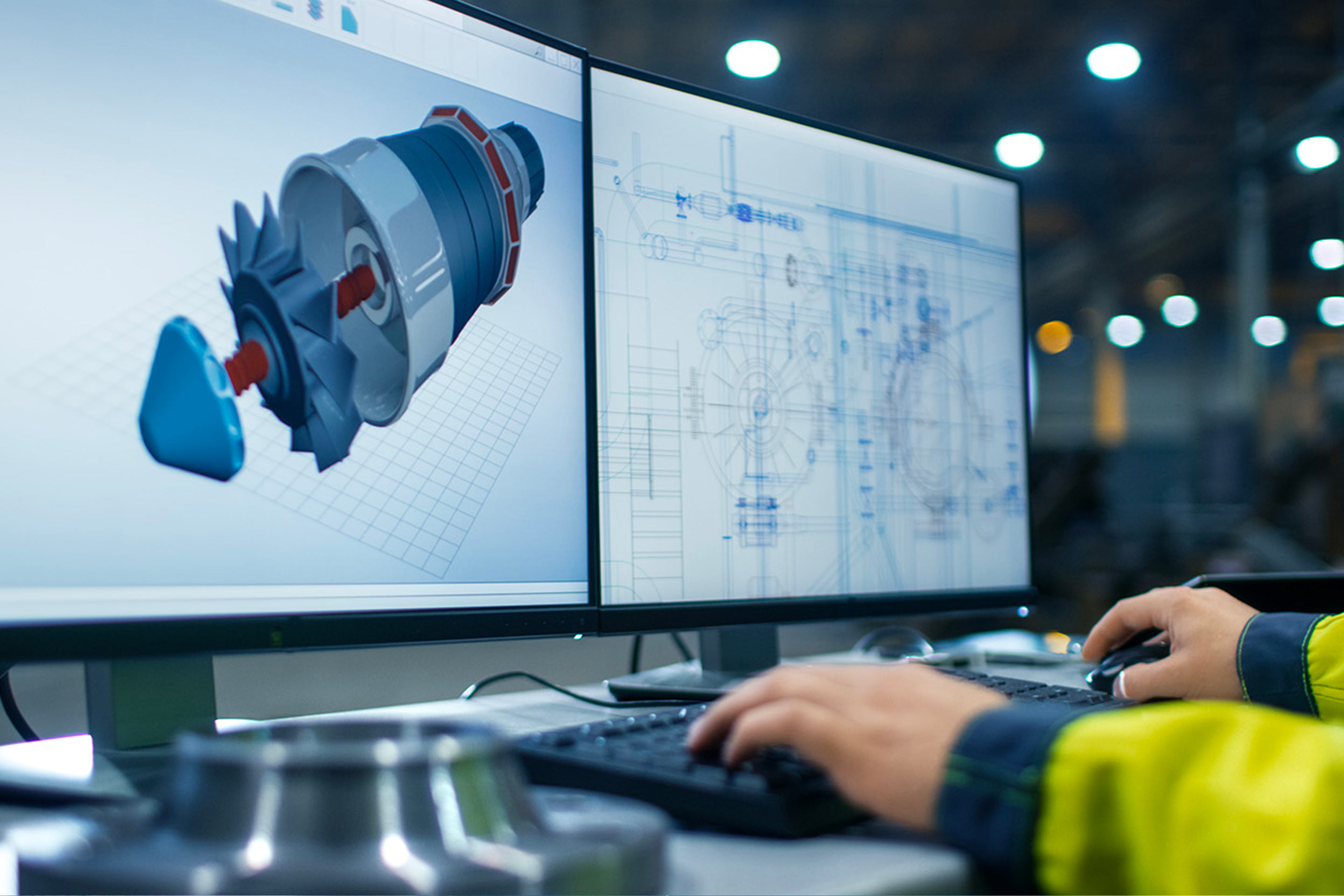Oliver Riemenschneider, Managing Director at ABB Turbocharging, tells charge! about the company’s current achievements and future ambitions for digital transformation.
He says the combination of monitoring, analytics and digitally empowered feedback cycles offers the possibility for much deeper insight into the performance and lifecycle of turbochargers, and ushers in rapid advances for performance, reliability and predictability.
ABB charge!: Which areas of digital technology would you say ABB Turbocharging has most fully embraced to date?
Oliver: We’ve been investing in digital technology for some time when it comes to how we support our service engineers, in product design and production, and in interactions with OEMs.
But more recently, we’re putting greater focus on customer-facing initiatives. That currently takes three forms.
First, we’re now looking at how operational data from customers’ actual installations can help us optimize how well they work. We can look at customers’ data and compare that with our design principles and models, and then see how we can help engineers optimize the performance of our turbochargers.
Second, we’re digitalizing many of our interactions with customers, creating custom portals for our larger customers, simplifying transactions and making it easier for them to access the documentation they need.
Third, we’re investing in data to improve our service offering for customers, making their lives more predictable, both on the level of consistent performance and in terms of their financial planning.
 Oliver Riemenschneider, Managing Director at ABB Turbocharging
Oliver Riemenschneider, Managing Director at ABB Turbocharging
Can you give specific examples of how these initiatives in digital technology create benefits for customers?
There are three, very good examples, which show different directions in digitally empowered technology, but which share the common theme of using smart data to empower our customers.
On the engine performance level, our Tekomar XPERT software offers guidance on where engine optimizations and fuel-savings might be made – specifically for two-stroke and auxiliary engines in merchant marine applications. We have recently upgraded this software to operate at a fleet-wide level, providing fleet managers and technical directors in the easy-to-access web application with the ability to benchmark engine health, potentially creating savings on the fleet and vessel levels. Going forward, we’re going to build on this platform to extend the scope beyond these applications, as well as make it more practical for people – whether they are onshore or onboard – to have a consistent, easy-to-read view of operations.
We have also launched the Digital SIKO exposure-based maintenance concept which analyses the remaining lifecycle for rotating parts using actual operational data. Historically, the recommendation to exchange components came from a static model, based on test data and assumptions about how parts would degrade over time. Now, however, we can look at the latest information from the installation, and the recommendation is adjusted dynamically according to that data. It’s also possible for us to make recommendations on load, to allow operators to extend the lifecycle of components and simplify scheduling work on the engine.
Today, this is for two-stroke turbochargers, but naturally we’re looking to extend the envelope to include also four-stroke, medium speed, and maybe also turbochargers in high speed engines.
We have also announced a new turbocharger model, MXP, which dramatically increases the possibilities for self-service by operators. Using a companion digital app, crew members can complete service procedures, troubleshoot problems, and seamlessly order replacement parts. We’ve discussed self-servicing with OEMs and end-users, and this feels like very welcome move in the market. We very much want to enable self-servicing in the field, empowered by digital.
Back in the company’s own offices and workshops, how has ABB Turbocharging improved its own product design and production processes through digitalization?
There are multiple aspects to product design engineering that have very much benefited from digitalization – such as finite element calculations and CFD calculations. Also, we are now able to bring the CAD process closer to the NC programming and the actual manufacturing process. We’re pretty far ahead with that work. This means we can reduce the time to market for new technologies and new product versions.
Those are important, but they’re more the traditional backbone of digitalization in product creation. It needs another aspect to create a business advantage for us.
Where that extra aspect lies is in using the information we obtain from the field to, first, improve our digital products. And that’s what we do already. Second, we’re able to use real operational data to refine and optimize our products. That’s something we announced with the A200-H turbocharger at CIMAC Congress.
This enables a virtuous circle between design and operation as we go forward: the A200 itself is built specifically to allow the collection of operational data for analysis, to allow us to optimize and improve that specific installation, to make the best use of its capabilities and reduce Total Cost of Ownership. Second, that information from actual usage also goes back into our own design cycle, allowing us to iterate effectively on products, based on factual observations of how they behave.

Where might we expect to see strides forward from ABB Turbocharging in the next period of development?
The next big area for us to focus on is the transactional part of our business, where we can make a lot of efficiency gains.
The situation around transactions today can often be messy and there’s too much margin for error. When someone has a problem onboard, there’s a flood of emails and interactions around the vessel schedule, stock availability, agent availability and customs clearances, all happening in parallel, with dozens of people involved.
That situation is crying out for simplification. And we see the kind of automated, remote reporting and monitoring we’ve already discussed coming into play here – that we understand a customer’s needs, the equipment they have, and their pain-points based on real data from their application. All before they even approach us.
As we move further into the future, I anticipate the rise of autonomous operation, by which I mean the early, automatic detection and mitigation of risk, and in parallel, creating more predictability through data, both in terms of technical events and their commercial impact.
In anticipation of this direction, we’ve started to support flat-rate service agreements with some customers. These flat rates mean that we’re taking over more operational responsibility, which we’re able to do more and more as we gain greater insight, through digital, through accumulated sensor data, into what is happening in the field. That is very much the direction the future is taking.
ABB charge! turns digital this month – any thoughts on the advantages this brings to customers and other readers?
My wish is for it to become a ‘home’ for our customers – a place to interact with us through our stories, learn what’s happening, and especially in terms of their comfort in sharing and reacting.
I hope that we’re able to become more responsive as an organization through this kind of platform. Because information is at the tip of the finger with digital publications, intimacy with readers can be increased, and the possibility to reach out and ask, then receive an answer is enhanced. I hope that one day we come to see it as an interaction space with customers, as opposed to a publication.














